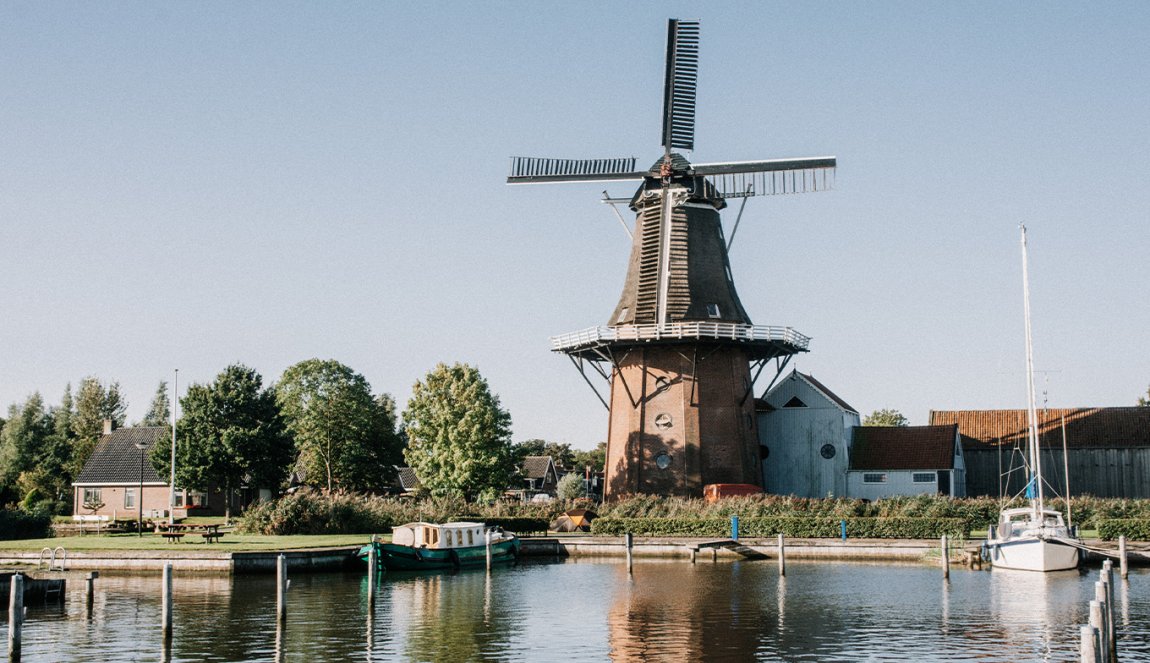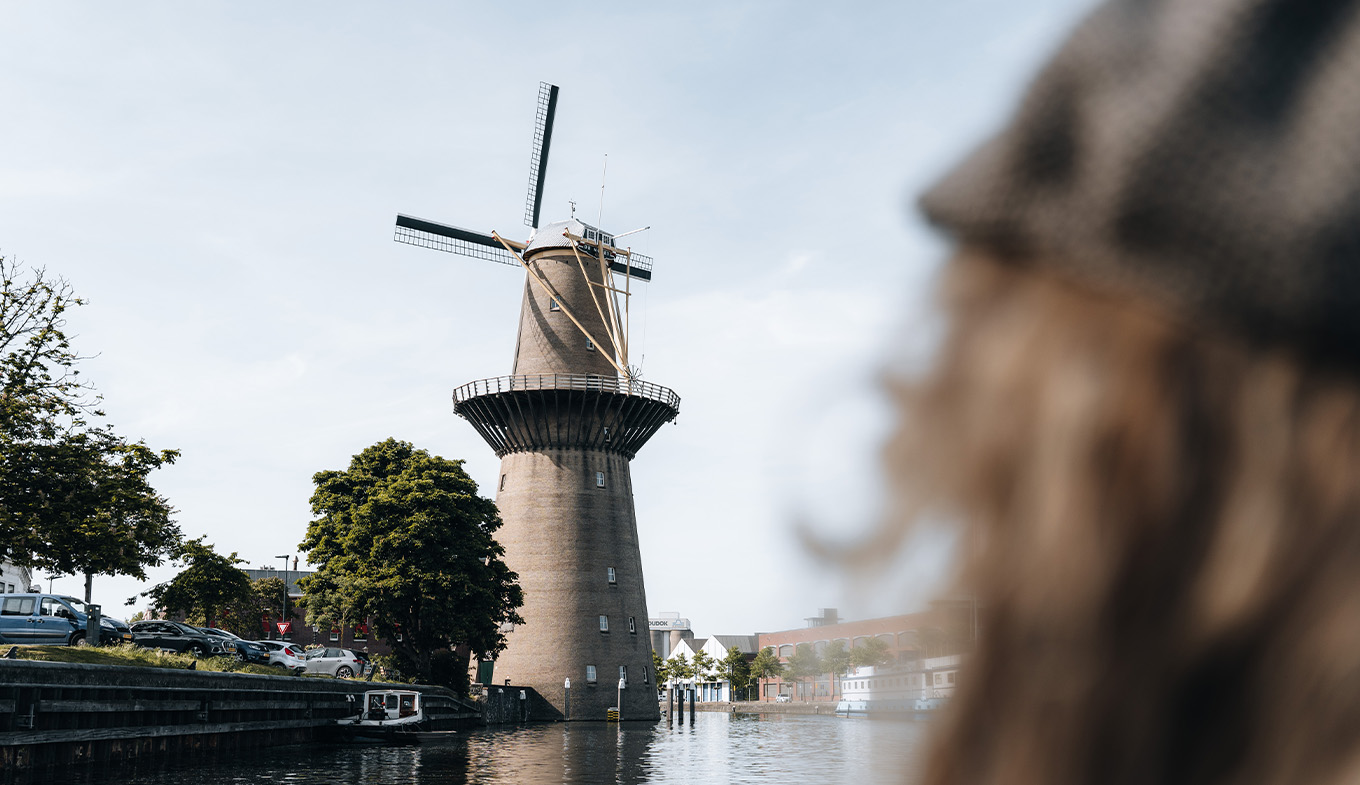
Windmills in the Netherlands: explore these historical icons
Who doesn’t know the famous Dutch windmills? The group of windmills at Kinderdijk are among the most famous, but with over 1,000 mills across the country, there are more than enough destinations where you can visit a real Dutch windmill. Here, you can read about the different types of mills. If this has inspired you to visit one in real life, you can join a tour, visit a mill shop or even stay in a windmill overnight!
- Read about the different types of windmills.
- Visit a group of Dutch windmills.
- Spend the night in a windmill.
A rich history
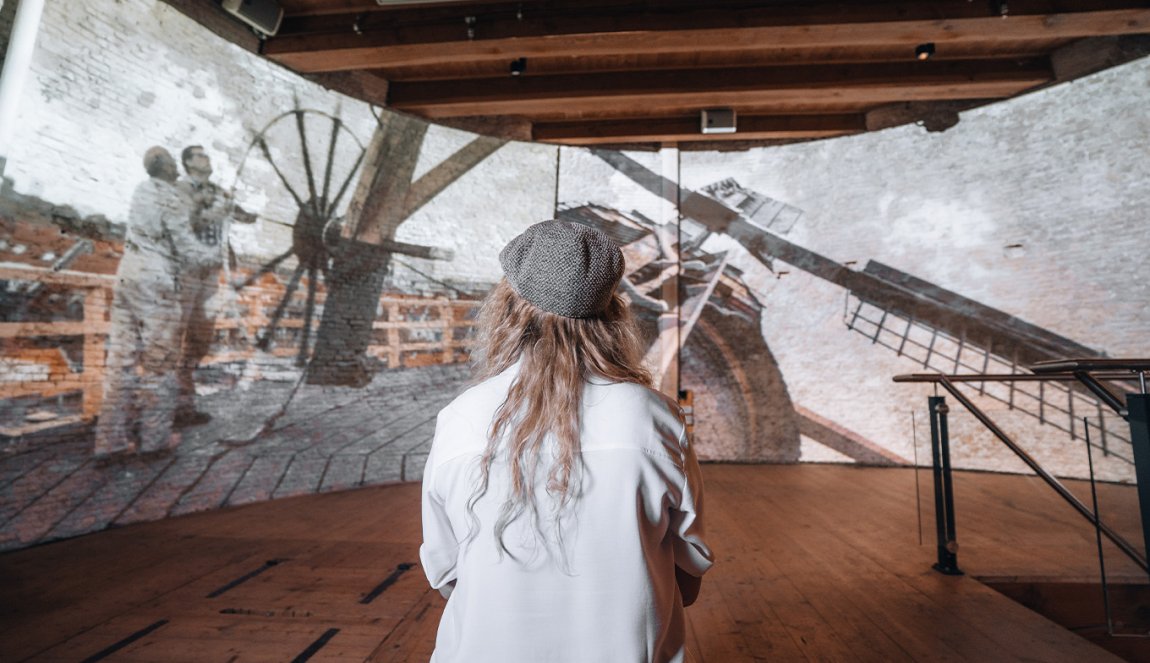
You can find windmills in many countries, but in the Netherlands, there are so many of them and they are such an important part of the country’s cultural and industrial heritage that many people around the globe see them as typically Dutch. The Netherlands has more than 1200 windmills, many of which are still in operation. They’ve been a defining part of the Dutch landscape ever since the Middle Ages: the earliest mention of a windmill in the Netherlands, which stood in a place called Willemskerke in Zeeland, dates from 1221.
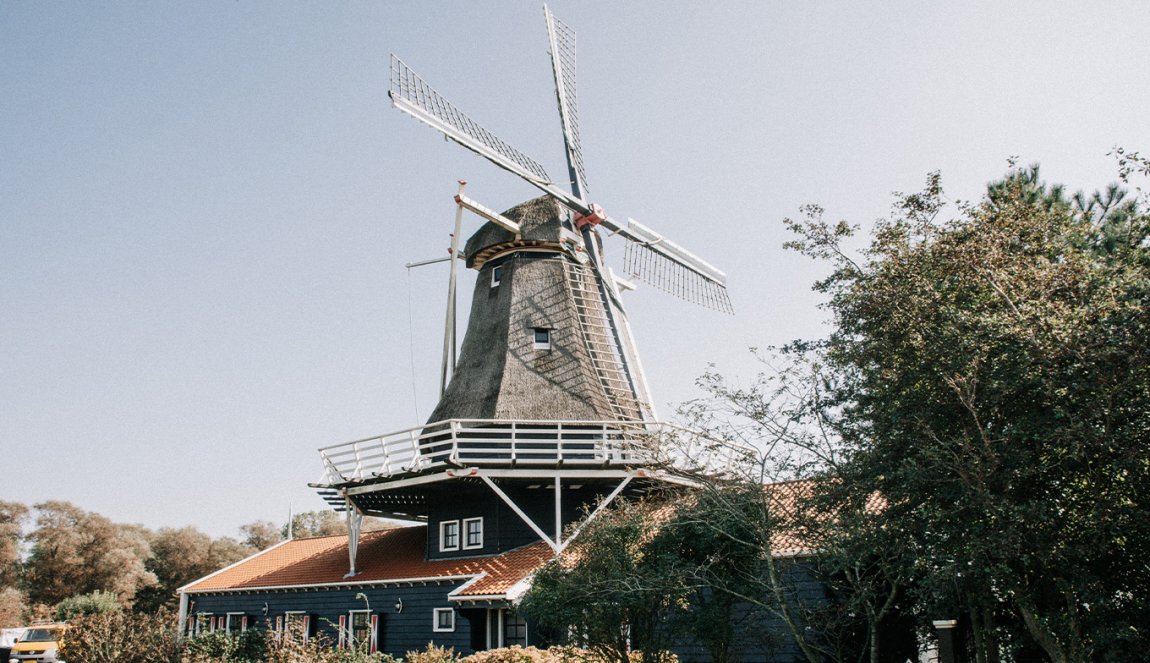
In the Netherlands, windmills are generally divided into two categories: polder mills, used for pumping water to drain the land, and industrial mills, used for various purposes including grinding grain, sawing wood, making pigments for paint and making paper. Industrial mills are common in other countries too, but polder mills are really a Dutch thing.
Mills can be categorized based on their technology and architecture, often depending on how the mill’s sails are positioned to catch the wind from a specific direction. The mechanism for this may be located on the exterior of the mill. Such mills are recognizable by their 'tail': at the back of the cap, there is a long structure made of wooden beams that extends downwards. Other mills do not have such a structure and appear much bulkier, as the turning mechanism – which takes up a lot of space – is located inside.
Industrial mills and their footprint
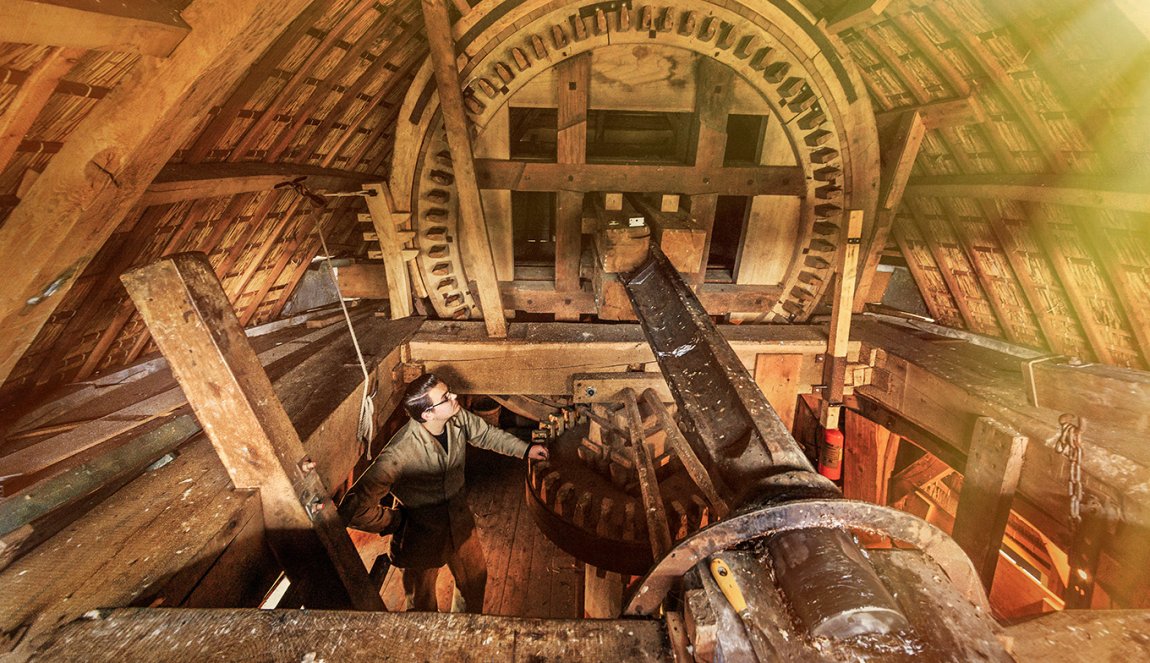
The earliest windmills were industrial mills. Polder mills began to be built in the early 15th century. These early polder mills used paddle wheels, powered by the sails, to move the water. It was this type of mill that was used to drain the Beemster polder in 1612. And it’s these mills that are the perfect symbol for the special relationship the Dutch have with water: they cherish it, but they have also been in a constant struggle with it to reclaim much of their land.
Windmills were (and still are!) used to keep land dry that has been claimed from the sea. The degree to which windmills have shaped the landscape of the Netherlands as we know it now cannot be overstated. Without windmills, huge swathes of the country would be underwater.
The design and technology of windmills has been steadily improved over the centuries. In 1589, the Flemish mathematician, engineer and polymath Simon Stevin wrote on windmills and hydraulics, and invented the molengang – a group of windmills built next to each other. This made it possible to lift water over greater heights so deeper polders could be created. The most famous of these groups of windmills is the one in Kinderdijk, but there are also examples in Leidschendam, Zevenhuizen and Aarlanderveen. The molengang in Aarlanderveen is the only one that is still in operation.

In the 19th century, the design of the windmills was improved further: the paddle wheel was replaced by an Archimedean screw, which is a much more efficient way to pump water. This meant it was no longer necessary to use the molengang set-up. The newest development in the field is using windmills to generate renewable energy. Of course, modern wind turbines can be found in many countries, but in the Frisian village of Sintjohannesga, you will find Molen de Hersteller, a historical mill that has been modernized and is currently being used as a wind turbine. As is so often the case in the Netherlands, heritage and sustainable innovation go hand in hand.
Discover the Dutch windmills
There are many windmills in the Netherlands you can visit. You can see that they are open to the public if they fly a blue flag. On National Windmill Day, which usually happens on the second weekend of May, you can also visit mills that are not usually open to the public. Another exciting thing to do is stay in a windmill overnight – several windmills offer holiday lets. Many of the mills that are still operating also have a shop where you can buy their products. At Molen De Maagd in Hulshorst, a team of volunteers still runs the grain mill and a shop selling the flour. Molen de Windhond in Soest also sells flour, which has been milled partly there and partly in another mill. Another great destination is De Kat, a chalk and paint mill in Zaandam, where the miller and his colleagues will demonstrate their age-old craft.
If you aren’t staying near any of these, don’t despair – one of the Netherlands’ windmills is almost certainly nearby. After all, there are 1,200 of them here! Find yours.
